Are you feeling overwhelmed by the financial aid process? You're not alone! Navigating scholarships, grants, and loans can seem daunting, but we're here to break it down into manageable steps. Join us as we explore essential tips and resources to help you secure the financial support you need to achieve your education goalsâread more to discover how to make this journey easier!

Personal Information and Contact Details
Financial aid applications require accurate personal information and contact details to ensure proper processing. Essential elements include full name (as listed on official documents), date of birth (to verify identity and eligibility), and Social Security number (for U.S. residents, primarily for federal aid). Permanent address (must include street name, city, state, and ZIP code) is crucial for correspondence purposes. Additionally, phone number (including area code) provides a quick communication channel for follow-up inquiries, while email address (preferably a personal address, not a school-issued one) facilitates electronic notifications and aid updates. Including these details accurately expedites the review process and enhances communication efficiency with financial aid personnel.
Purpose of Inquiry and Specific Request
Financial aid inquiries aim to clarify eligibility criteria and application processes for programs like Pell Grants and Federal Student Aid. Specific requests might include detailed information about documentation needed for verification or understanding deadlines for state scholarships, such as those in California or Texas. Additionally, students may seek guidance on appealing financial aid decisions or exploring alternative funding options like work-study programs. Accurate information is essential for ensuring students can successfully navigate financial aid systems to support their education.
Relevant Financial Details and Supporting Documentation
Financial aid applicants must provide relevant financial details to determine eligibility for assistance. Key documents include the Free Application for Federal Student Aid (FAFSA) form, which requires annual income information, household size, and other financial factors. Tax returns from the previous two years serve as critical evidence of income, with a focus on adjusted gross income (AGI) for accuracy. Additional supporting documentation may consist of W-2 forms from employers, 1099 forms for self-employed individuals, and bank statements detailing assets. For special circumstances, a letter explaining unique financial situations may be necessary to supplement standard documentation. Each institution may have specific deadlines for submissions, often aligning with enrollment periods and funding availability, making timely submission crucial for financial support.
Explanation of Current Financial Situation
Current financial situations can significantly influence students' ability to access higher education. For many households, unexpected events such as job loss, medical expenses, or family emergencies can strain budgets. For example, students coming from middle-income families (household annual income typically ranging from $50,000 to $80,000) may find that rising tuition fees at institutions like public universities (averaging over $10,000 per year) and living costs (averaging $15,000 per year) can lead to financial difficulties. Additionally, students attending private colleges (tuition averaging $30,000 per year) may struggle to meet these expenses due to stagnant wages or lack of financial reserves. External factors such as inflation rates (currently hovering around 6%) can further pressure family finances. Consequently, many students seek financial aid to ensure they can pursue their educational goals without overwhelming debt or compromising essential living expenses.
Appreciation and Closing Remarks
Financial aid advising plays a crucial role in supporting students' educational journeys, navigating the complexities of funding options. Increased federal scholarships, such as Pell Grants, can significantly alleviate the financial burden on students from low-income families. Moreover, state-specific programs like Georgia's HOPE Scholarship provide both merit and need-based assistance, aiming to enhance college accessibility. Institutions also offer institutional grants to help bridge gaps in tuition costs. Acknowledging these resources is essential for students when planning their financial futures. A partnership between financial aid officers and students fosters an understanding of repayment options, loan types, and budgeting strategies for managing educational expenses. Ultimately, effective communication ensures that students feel empowered to take control of their financial responsibilities while pursuing their academic goals.
Letter Template For Financial Aid Advising Samples
Letter template of financial aid application update for current students
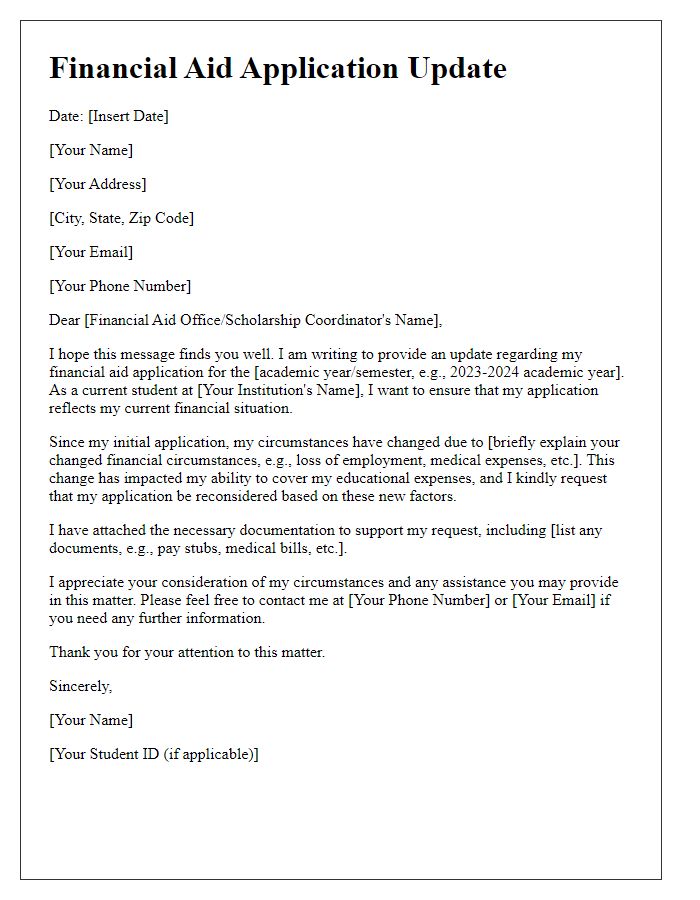
Letter template of financial aid review for changing family circumstances
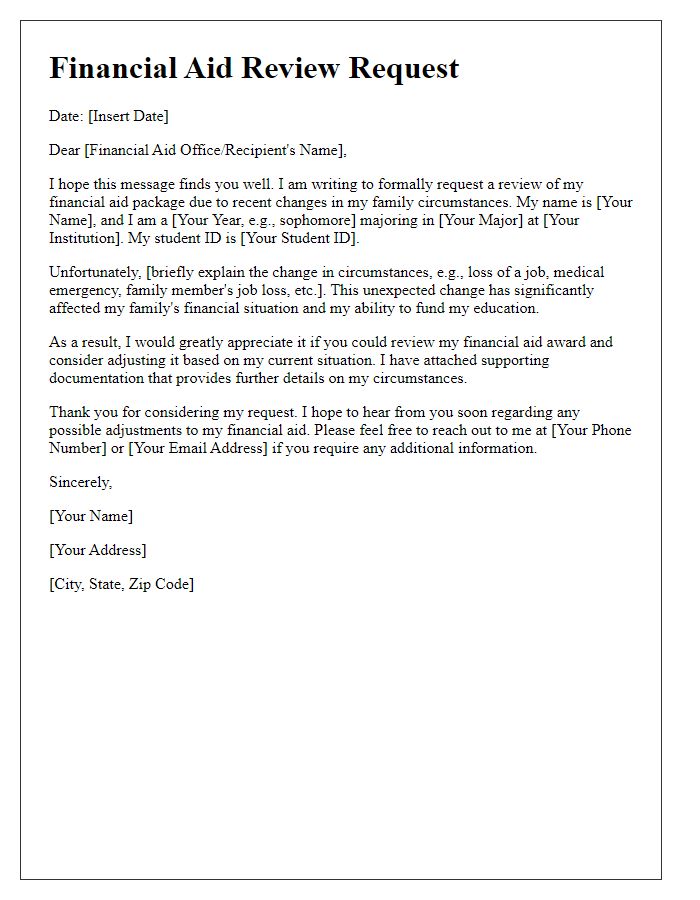
Letter template of financial aid reassessment for academic status changes
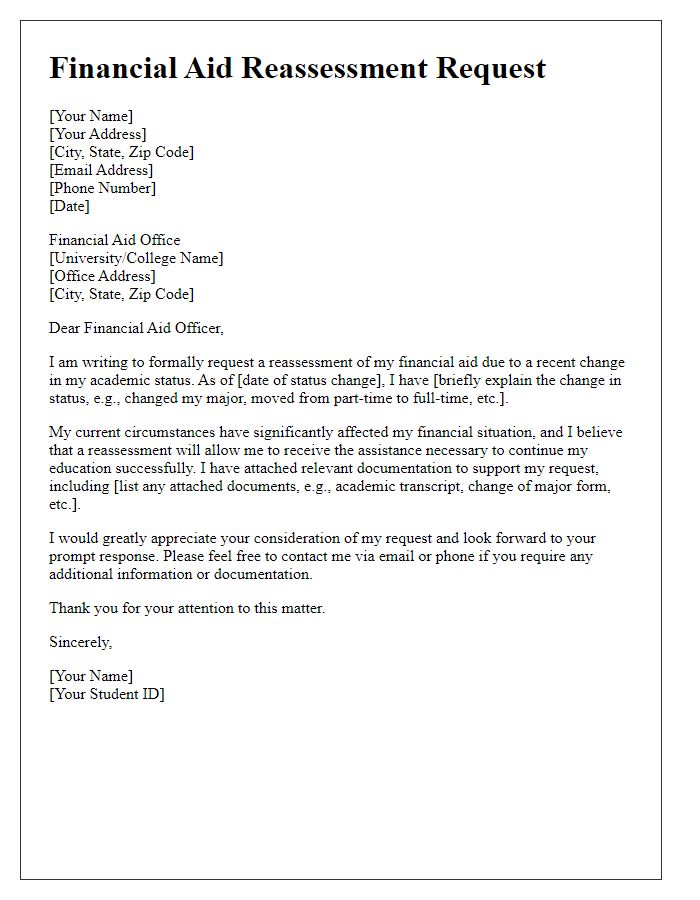


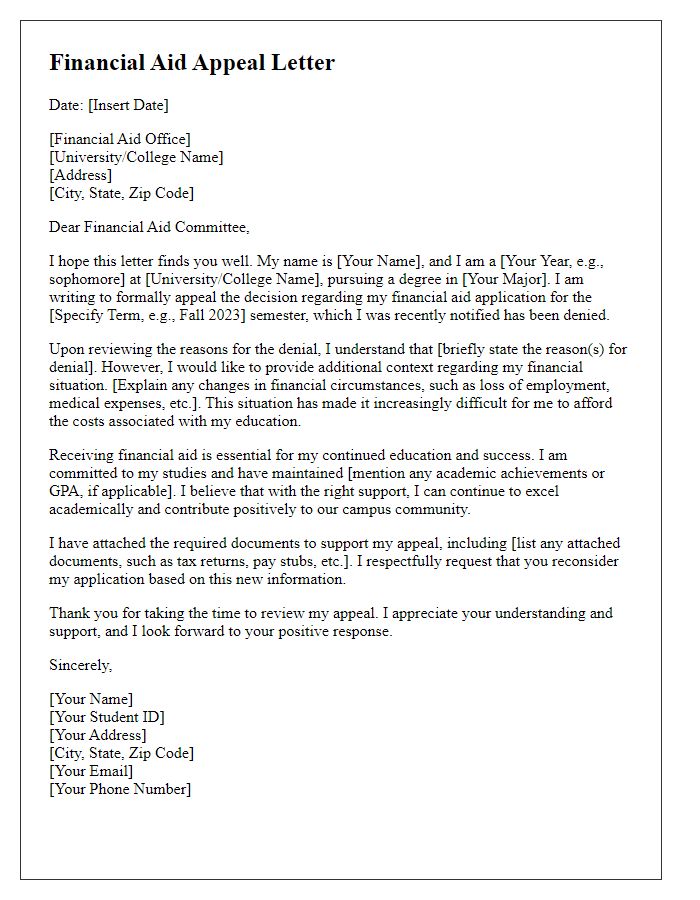

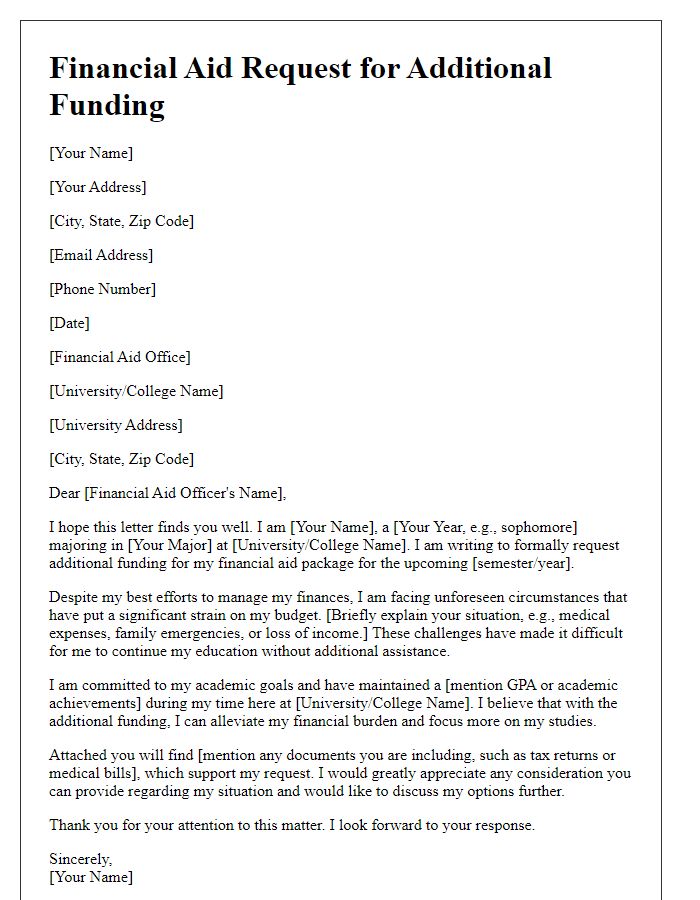
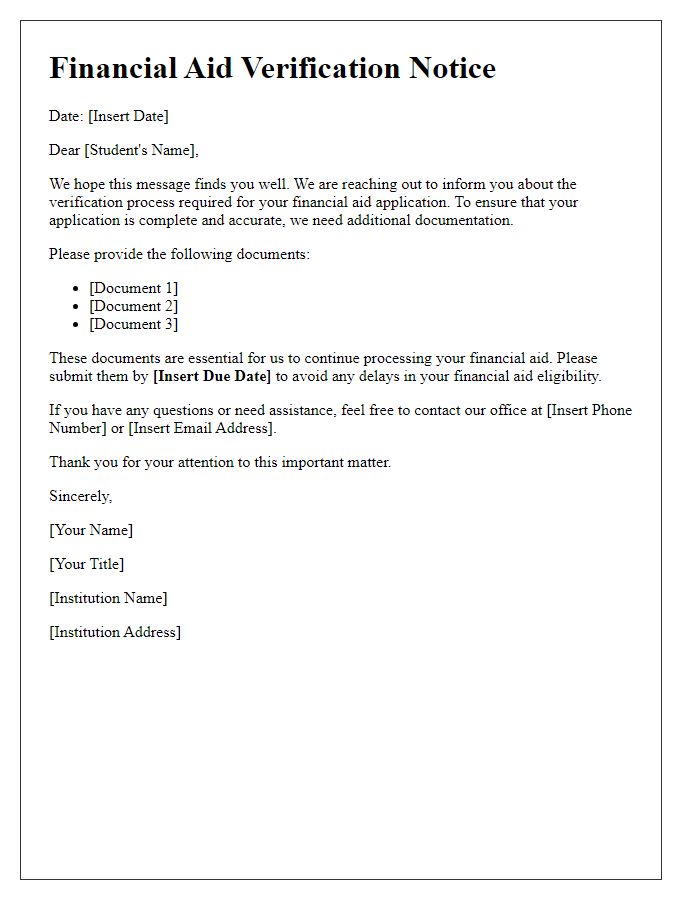
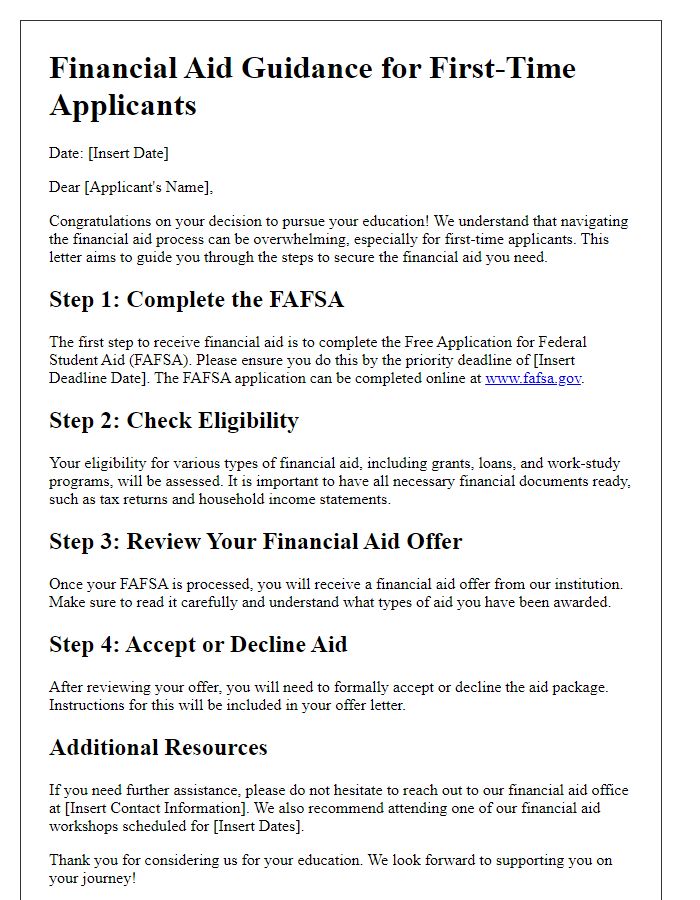
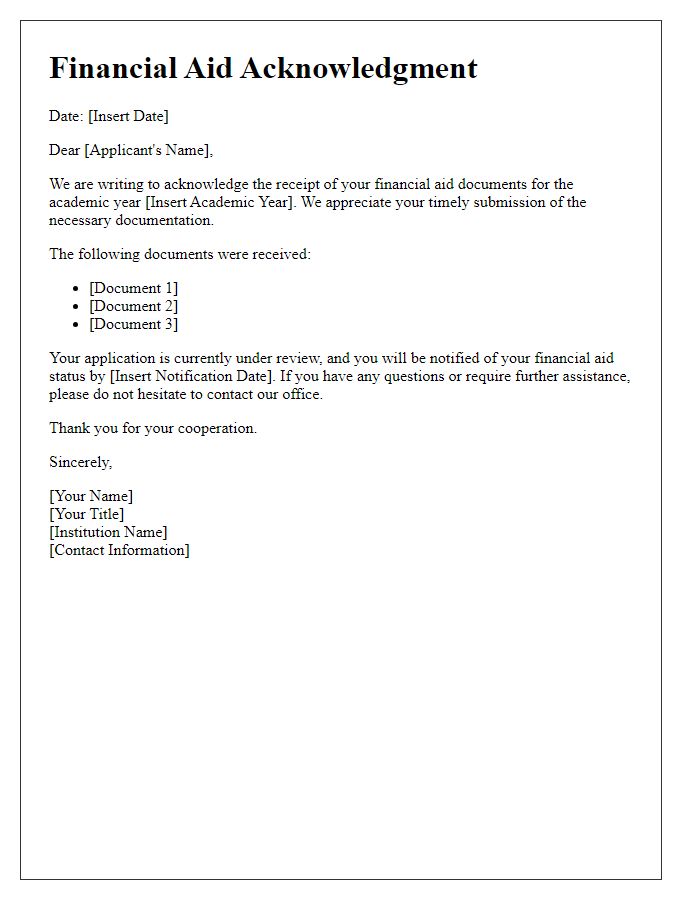


Comments